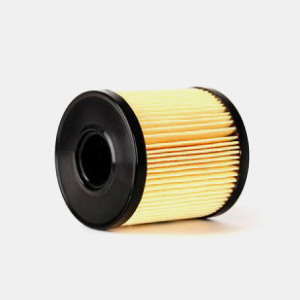-
 Afrikaans
Afrikaans -
 Albanian
Albanian -
 Amharic
Amharic -
 Arabic
Arabic -
 Armenian
Armenian -
 Azerbaijani
Azerbaijani -
 Basque
Basque -
 Belarusian
Belarusian -
 Bengali
Bengali -
 Bosnian
Bosnian -
 Bulgarian
Bulgarian -
 Catalan
Catalan -
 Cebuano
Cebuano -
 China
China -
 Corsican
Corsican -
 Croatian
Croatian -
 Czech
Czech -
 Danish
Danish -
 Dutch
Dutch -
 English
English -
 Esperanto
Esperanto -
 Estonian
Estonian -
 Finnish
Finnish -
 French
French -
 Frisian
Frisian -
 Galician
Galician -
 Georgian
Georgian -
 German
German -
 Greek
Greek -
 Gujarati
Gujarati -
 Haitian Creole
Haitian Creole -
 hausa
hausa -
 hawaiian
hawaiian -
 Hebrew
Hebrew -
 Hindi
Hindi -
 Miao
Miao -
 Hungarian
Hungarian -
 Icelandic
Icelandic -
 igbo
igbo -
 Indonesian
Indonesian -
 irish
irish -
 Italian
Italian -
 Japanese
Japanese -
 Javanese
Javanese -
 Kannada
Kannada -
 kazakh
kazakh -
 Khmer
Khmer -
 Rwandese
Rwandese -
 Korean
Korean -
 Kurdish
Kurdish -
 Kyrgyz
Kyrgyz -
 Lao
Lao -
 Latin
Latin -
 Latvian
Latvian -
 Lithuanian
Lithuanian -
 Luxembourgish
Luxembourgish -
 Macedonian
Macedonian -
 Malgashi
Malgashi -
 Malay
Malay -
 Malayalam
Malayalam -
 Maltese
Maltese -
 Maori
Maori -
 Marathi
Marathi -
 Mongolian
Mongolian -
 Myanmar
Myanmar -
 Nepali
Nepali -
 Norwegian
Norwegian -
 Norwegian
Norwegian -
 Occitan
Occitan -
 Pashto
Pashto -
 Persian
Persian -
 Polish
Polish -
 Portuguese
Portuguese -
 Punjabi
Punjabi -
 Romanian
Romanian -
 Russian
Russian -
 Samoan
Samoan -
 Scottish Gaelic
Scottish Gaelic -
 Serbian
Serbian -
 Sesotho
Sesotho -
 Shona
Shona -
 Sindhi
Sindhi -
 Sinhala
Sinhala -
 Slovak
Slovak -
 Slovenian
Slovenian -
 Somali
Somali -
 Spanish
Spanish -
 Sundanese
Sundanese -
 Swahili
Swahili -
 Swedish
Swedish -
 Tagalog
Tagalog -
 Tajik
Tajik -
 Tamil
Tamil -
 Tatar
Tatar -
 Telugu
Telugu -
 Thai
Thai -
 Turkish
Turkish -
 Turkmen
Turkmen -
 Ukrainian
Ukrainian -
 Urdu
Urdu -
 Uighur
Uighur -
 Uzbek
Uzbek -
 Vietnamese
Vietnamese -
 Welsh
Welsh -
 Bantu
Bantu -
 Yiddish
Yiddish -
 Yoruba
Yoruba -
 Zulu
Zulu
Agricultural Insect Nets for Effective Pest Control and Crop Protection
The Role of Insect Nets in Agriculture
Agriculture is the backbone of the global economy, providing food, raw materials, and employment to billions of people. However, one of the biggest challenges facing farmers today is the threat posed by pests and insects. These unwanted guests can wreak havoc on crops, leading to reduced yields and increased costs for farmers. To combat this pervasive issue, insect nets have emerged as a practical and effective solution.
Insect nets are fine mesh barriers designed to keep pests and harmful insects away from crops while allowing air, light, and water to penetrate. They are made from various materials, such as polyethylene, polyester, or polypropylene, and come in different mesh sizes, allowing farmers to select the appropriate type based on their specific needs. By physically blocking unwanted insects, these nets serve as a protective shield, reducing the need for chemical pesticides and fertilizers.
The Role of Insect Nets in Agriculture
Another significant advantage of insect nets is the enhancement of crop quality and yield. Pests can cause direct damage to crops through feeding, leading to a decrease in quality and market value. Insect nets help to prevent this damage by creating a barrier that deters insects from accessing the crops. As a result, farmers can experience higher yields of better-quality produce, which can improve their profitability and contribute to food security.
insect net for agriculture

Moreover, insect nets can help in the protection of crops from more than just insects. They can act as shields against birds and other animals that may be tempted to feed on the crops. Additionally, some nets have UV-reflective properties that can confuse certain pests, making them less likely to approach the crops. This multipurpose functionality enhances the overall effectiveness of pest management strategies in agriculture.
Implementing insect nets can also be cost-effective in the long run. While the initial investment in netting materials and installation may seem high, the reduction in pesticide costs, combined with increased yields and improved crop quality, can result in significant savings for farmers over time. Furthermore, the longevity of high-quality insect nets means that they can be re-used for several growing seasons, contributing to their cost-effectiveness.
Despite the many benefits of insect nets, it is essential for farmers to consider their specific agricultural contexts. Different crops and growing conditions may require different types of nets, and understanding the local pest populations is crucial for effective pest management. Additionally, farmers should stay informed about proper installation and maintenance practices to ensure that the nets remain effective throughout the growing season.
In conclusion, insect nets represent a revolutionary approach to pest management in agriculture. By providing a physical barrier against harmful insects, these nets help reduce pesticide use, enhance crop quality, and improve overall yields. As sustainable practices become increasingly vital in modern agriculture, insect nets offer a promising solution that aligns with the goals of both productivity and environmental stewardship. Embracing such innovative methods can lead to a healthier farming ecosystem and a more secure food supply for future generations.
-
Shipping Plastic Bags for Every NeedNewsJul.24,2025
-
Safety Netting: Your Shield in ConstructionNewsJul.24,2025
-
Plastic Mesh Netting for Everyday UseNewsJul.24,2025
-
Nylon Netting for Every UseNewsJul.24,2025
-
Mesh Breeder Box for Fish TanksNewsJul.24,2025
-
Expanded Steel Mesh Offers Durable VersatilityNewsJul.24,2025











